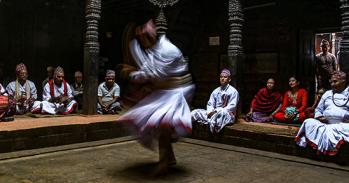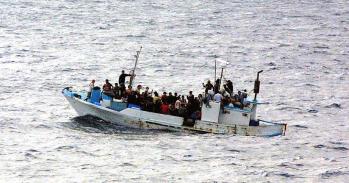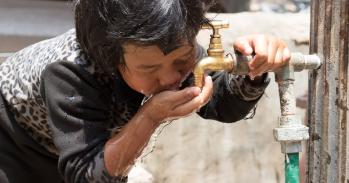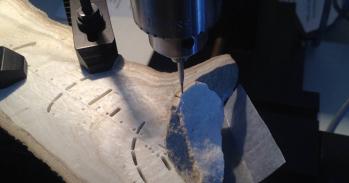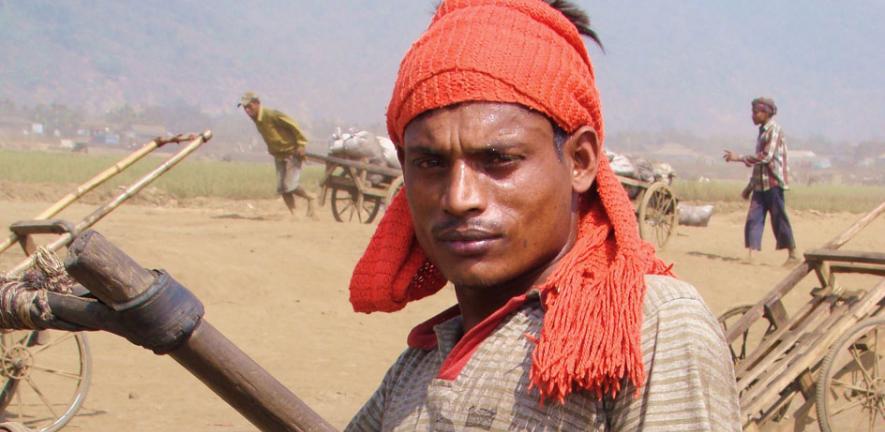
As India sets about constructing a metal curtain along the full length of its border with Bangladesh, Cambridge anthropology graduate Delwar Hussain travelled to the remote village of Boropani, which straddles the frontier, to see how the lives of ordinary people are being affected by the tussle between Dhaka and its emerging superpower neighbour. He will be talking about his experiences, which also form the subject of a forthcoming book, in Cambridge this Thursday.
As India sets about constructing a metal curtain along the full length of its border with Bangladesh, Cambridge anthropology graduate Delwar Hussain travelled to the remote village of Boropani, which straddles the frontier, to see how the lives of ordinary people are being affected by the tussle between Dhaka and its emerging superpower neighbour. He will be talking about his experiences, which also form the subject of a forthcoming book, in Cambridge this Thursday.
As states and societies become further enmeshed, more walls, barricades and cordons seem to be going up, rather than coming down.
Delwar Hussain
In 2008, I travelled from my cosy lodgings in Cambridge to a remote and isolated coal-mining village, clustered between hills and wetlands on the Bangladesh-India border. The 2,500 mile boundary on which the village of Boropani is located is considered to be one of the most dangerous in the world. Every year, large numbers of people, most of them poor Bangladeshi farmers and traders, are shot at and killed by Indian border security guards.
I had gone there to find out how such out of the way places are at the centre of some of the biggest discussions of the present day – on globalisation, development, neoliberalism, and the growth of new world superpowers. I wanted to write about the double-sided, barbed-wire security fence India is constructing along the full length of its border with Bangladesh – and in particular, how the fence will affect those who live and work on the margins of these countries.
The metal curtain is intended to define hitherto opaque state margins and delineate once and for all the populations who live alongside it, sorting out “India” from “Bangladesh” and “Indians” from “Bangladeshis”. Delhi argues that the fence is necessary to prevent smuggling and illegal migration. Dhaka, on the other hand, says it is an example of bullying by its neighbour which has superpower pretensions. Rhetoric aside, the barrier is part of the irony of contemporary times. As states and societies become further enmeshed, as the links between them supposedly grow and become faster and more efficient than ever before, more walls, barricades and cordons seem to be going up, rather than coming down.
Boropani was divided in two at Partition in 1947, with one half going to India and the other to what was to become Bangladesh. It has the impermanent feel of a frontier town, with an international boundary running through it. The Indian side is where all the coal mines are located and that which exports the raw material. There are hundreds of soot-covered trucks chaotically lined up, waiting to cross the line of demarcation. The Bangladeshi half, which imports the coal, is teeming with thousands of dark skinned, gaunt labourers pushing, lugging, heaving and pulling carts laden with coal sacks.
The fence had not arrived here yet, but it was clearly on its way with the road that the barbed-wire barrier will be constructed upon, visible from the village. At the time it was just a scar of earth carved out on the side of the limestone hills. Living in Boropani over the course of the following 18 months, what became obvious was that despite attempts to prevent and curtail them, cultural, social, personal and economic connections continue between people on both sides of the border. The threat of state violence or abstract notions of illegality, national boundaries, citizenship, let alone religious difference – the very basis of the division of these countries in the first place - do not stop historically enduring bonds.
More than this, I learned about the particular history of the place and about the lives of the area’s diverse inhabitants and their own relationship with the periphery and indeed one another. They include both permanently settled and seasonal labour migrants; the gangs that illegally cross the border to work the mines; a dwindling community of an earlier “aristocracy”, who once had jobs at a nearby state-run industrial unit, and whose world is now overshadowed by the new market-orientated coal industry; the rising coal barons; hijras (otherwise known as the ‘third sex’) and the newly arrived NGO workers.
At its core, it is out-of-the-way communities and places such as Boropani that are at the centre of the industrial revolutions that are taking place across the Third World today and which their growing economies are ostensibly based upon. It is there that the highest prices are being paid in both environmental terms as well as the toll taken on human lives with the need and desire to develop and grow.
Delwar Hussain will be presenting a chapter from his forthcoming book based on his doctoral research on the Bangladesh-India border on Thursday 18th October at 4pm in the anthropology department. “Boundaries Undermined: The Ruins of Progress on the Bangladesh-India Border” is due for publication in January 2013. https://www.hurstpublishers.com/?s=delwar+hussain&submit=Search
This work is licensed under a Creative Commons Licence. If you use this content on your site please link back to this page.


